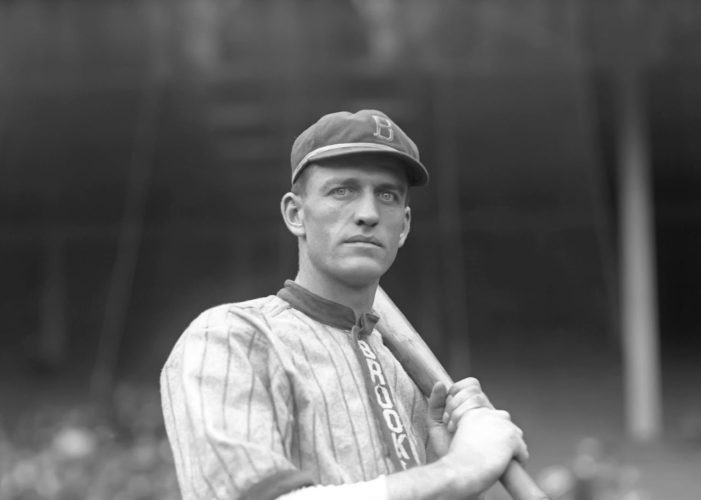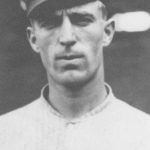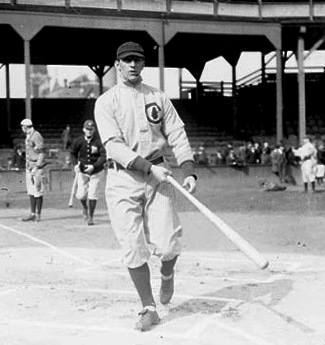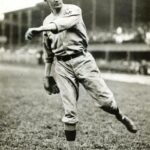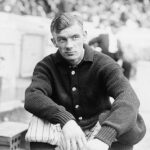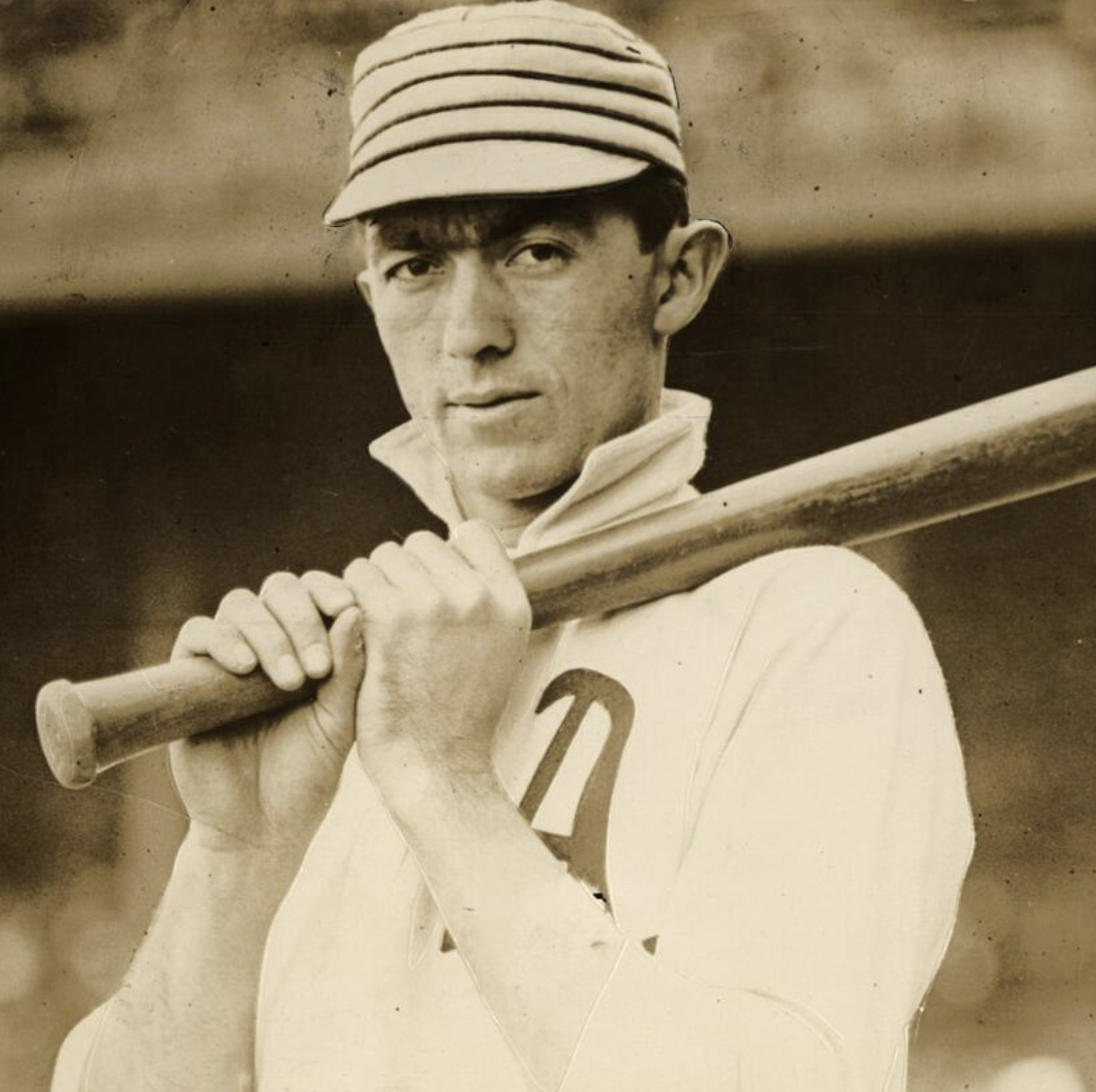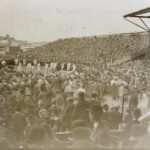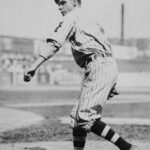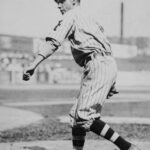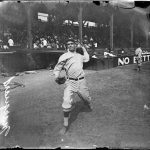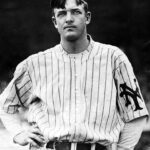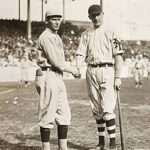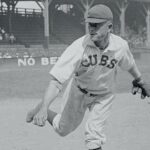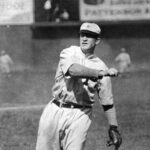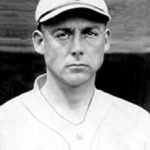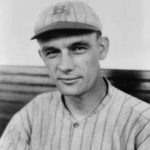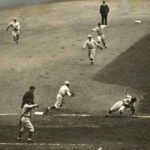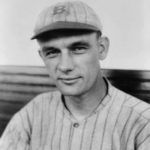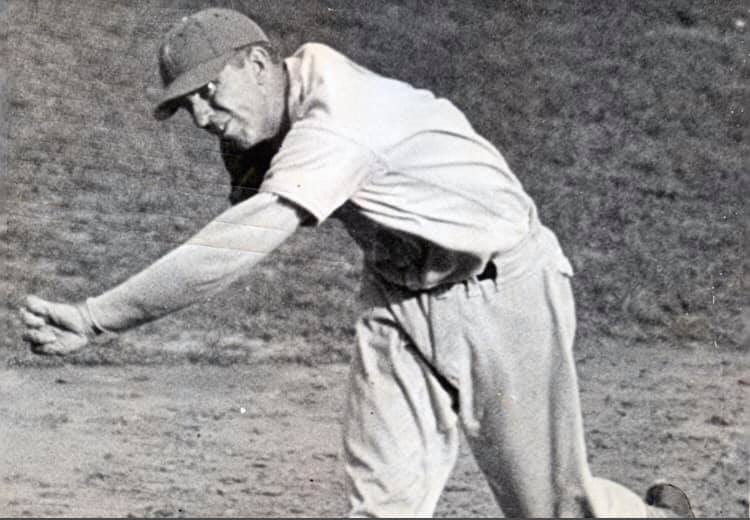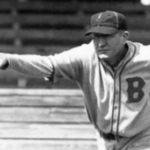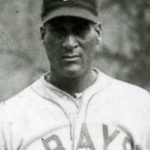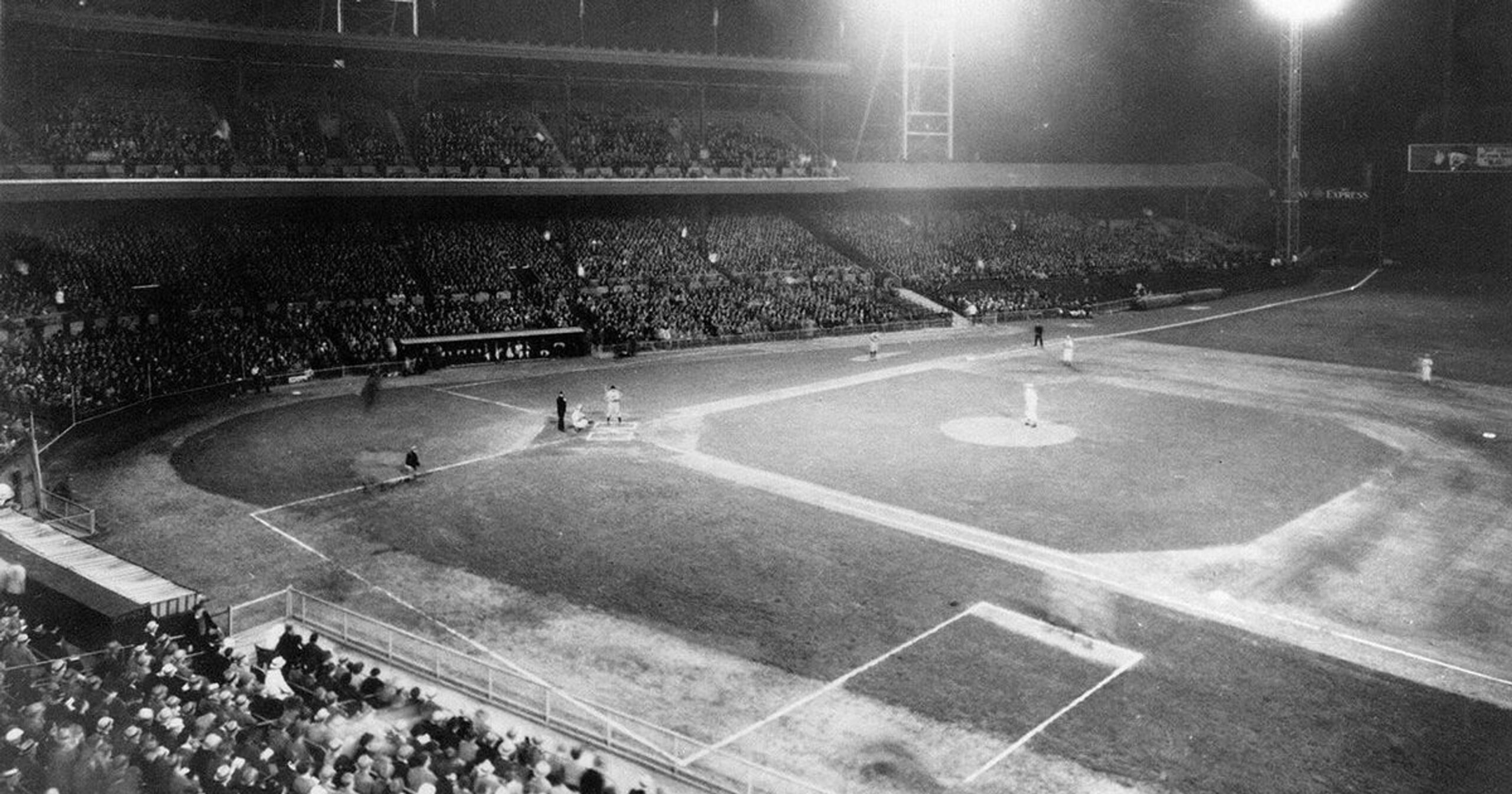Rube Marquard
Position: Pitcher
Bats: Both • Throws: Left
6-3, 180lb (190cm, 81kg)
Born: October 9, 1886 in Cleveland, OH
Died: June 1, 1980 (Aged 93-236d) in Baltimore, MD
Buried: Baltimore Hebrew Cemetery, Baltimore, MD
Debut: September 25, 1908 (3,119th in MLB history)
vs. CIN 5.0 IP, 6 H, 2 SO, 2 BB, 0 ER, L
Last Game: September 18, 1925
vs. PIT 1.0 IP, 4 H, 0 SO, 0 BB, 1 ER
Hall of Fame: Inducted as Player in 1971. (Voted by Veteran’s Committee)
View Rube Marquard’s Page at the Baseball Hall of Fame (plaque, photos, videos).
Full Name: Richard William Marquard
Pronunciation: \MAR-kward\
View Player Bio from the SABR BioProject
Nine Other Players Who Debuted in 1908
Donie Bush
Larry Gardner
Frank Baker
Amos Strunk
Buck Herzog
Rube Marquard
Slim Sallee
Hippo Vaughn
Joe Jackson
The Rube Marquard Teammate Team
C: Chief Meyers
1B: Jake Daubert
2B: Larry Doyle
3B: Heinie Groh
SS: Dave Bancroft
LF: George Burns
CF: Zack Wheat
RF: Fred Snodgrass
SP: Christy Mathewson
SP: Jeff Tesreau
SP: Hooks Wiltse
SP: Burleugh Grimes
RP: Sherry Smith
M: Wilbert Robinson
Vintage Baseball HOT ON EBAY
Card Collections ENDING SOON ON EBAY
MOST WANTED ROOKIE CARDS
VINTAGE SPORTS TICKETS
Baseball Hall of Famers
Notable Events and Chronology for Rube Marquard Career
Rube Marquard pitched into his late 30s, winning more than 200 games in his career. He was part of five pennant-winning teams, helping both the New York Giants and Brooklyn Robins to the World Series. He was best known for his amazing 19-game winning streak in 1912, which stretched from Opening Day to July 3rd. With the Giants he was in the shadow of Christy Mathewson, and never got along well with manager John McGraw, so in 1915 he received permission to arrange his own sale to Brooklyn. He was elected to the Hall of Fame in 1971.
Biography:
Most players nicknamed Rube got the name because they came from farms or small country towns. But Marquard grew up in Cleveland, where his father was the city engineer. After making a name for himself as a sandlot pitcher, Marquard signed for $200 a month with Indianapolis in 1907. They optioned him to Canton in the Central League, where he won 23 and lost 13. After he won his first Indianapolis start, 2 to 1, against Kansas City in 1908, a newspaper account said, “He is so tall and skinny (6’3″ 180-lbs) he looks like a big number one when he stands on the mound, but he pitches like Rube Waddell.” They called him Rube ever after.
After he won 20 for Indianapolis and pitched a perfect game, the New York Giants paid a then-record $11,000 for his contract. At 18 he reported to the Giants in mid-September, just in time to see the game with the Cubs in which Fred Merkle failed to touch second base. New York was still in an uproar over the incident a few days later when Marquard made his big league debut against Cincinnati. Somewhat panicked by the size of the crowd, Marquard hit lead-off batter Miller Huggins in the ribs, then walked the next two batters. After a visit from catcher Chief Myers, the nervous rookie decided to “let up a little.” “I let up, all right,” Marquard later admitted. “Hans Lobert hit the next pitch right out of the park.” As he departed for the clubhouse, the bleacher fans labeled him the “$11,000 Lemon.”
After two mediocre seasons, Marquard blossomed in 1911, going 25-7. In the World Series against the Athletics, he was instrumental in the coining of another immortal’s nickname. In Game Two he was locked in a 1-1 tie with Eddie Plank in the sixth inning when he threw a high, inside fastball to Frank Baker with a man on. Baker hit a game-winning homer, and was known thereafter as Home Run Baker.
Marquard and Christy Mathewson were writing daily commentaries on the games for rival newspapers. The next morning Mathewson’s column criticized Marquard for the pitch he threw to Baker. That afternoon Baker hit a game-tying homer in the top of the ninth off Matty; the A’s won in the 11th. Marquard had the last word in his column.
Marquard won 19 straight from Opening Day to July 3 in 1912, tying a mark set by Tim Keefe. Under present rules it would have been 20; he was not credited with a 4-3 win over Brooklyn when he relieved in the eighth inning with the score tied. That historic streak plus two 1912 World Series victories brought him a flock of show-business offers. He had made his vaudeville debut the previous winter, and after the 1912 season made a movie with Alice Joyce called “19 Straight.” He teamed up with Blossom Seeley, a headliner, in a skit, “Breaking the Record,” and later married her. They did a dance called the Marquard Glide. Rube was at home on stage. He’d say to the audience, “You wished it on yourselves, and I got nerve enough to sing it,” and did. In 1913 they did an act, “The Suffragette Pitcher,” in which Rube put on a dress and pitched for Blossom’s all-girl team. Later Rube did singing and talking acts with other headline performers.
Marquard relied more on control and a forkball changeup than his fastball. “Any hitter can hit a fast one,” he said. “But not many can hit slow ones.” In 1914 Marquard and Babe Adams pitched 21 innings, Rube getting the win. Three days later Marquard shut out the Reds. He claimed he never had a sore arm. In 1915 he pitched a no-hitter against Brooklyn in one hour, 16 minutes. But he missed his old coach, Wilbert Robinson, now manager of the Dodgers, and was getting tired of McGraw’s riding. With McGraw’s permission, he arranged his own sale to Brooklyn for $7,500. He got into two more World Series with the Dodgers but never won a Series ring.
Marquard led the NL with 18 losses in 1918 despite a 2.64 ERA. Then, on June 9, 1919, he broke his left leg sliding into third base and was out the rest of the year. He returned in 1920 to go 10-7 for Brooklyn’s NL champions, then spent a season with the Reds before finishing his career in Boston with the Braves. He missed most of 1924 with various illnesses and pitched mostly in relief in 1925.
Marquard managed Providence in the Eastern League in 1926, spent part of 1927 with Baltimore, managed Jacksonville in the Southeastern League, did a little umpiring, and was a scout and coach for Atlanta in the Southern Association. He worked for many years at mutuel windows at racetracks in Florida and Maryland.
@ET-DC@eyJkeW5hbWljIjp0cnVlLCJjb250ZW50IjoicG9zdF90YWdzIiwic2V0dGluZ3MiOnsiYmVmb3JlIjoiTGVhcm4gTW9yZSBhYm91dCB0aGUgdGVhbXMsIHBsYXllcnMsIGJhbGwgcGFya3MgYW5kIGV2ZW50cyB0aGF0IGhhcHBlbmVkIG9uIHRoaXMgZGF0ZSBpbiBoaXN0b3J5IC0gLSAtIC0gLSAtIC0gIiwiYWZ0ZXIiOiIiLCJsaW5rX3RvX3Rlcm1fcGFnZSI6Im9uIiwic2VwYXJhdG9yIjoiIHwgIiwiY2F0ZWdvcnlfdHlwZSI6InBvc3RfdGFnIn19@
Vintage Baseball HOT ON EBAY
Card Collections ENDING SOON ON EBAY
MOST WANTED ROOKIE CARDS
VINTAGE SPORTS TICKETS
Baseball Hall of Famers
Factoids, Quotes, Milestones and Odd Facts
Rube Marquard pitched into his late 30s, winning more than 200 games in his career. He was part of five pennant-winning teams, helping both the New York Giants and Brooklyn Robins to the World Series. He was best known for his amazing 19-game winning streak in 1912, which stretched from Opening Day to July 3rd. With the Giants he was in the shadow of Christy Mathewson, and never got along well with manager John McGraw, so in 1915 he received permission to arrange his own sale to Brooklyn. He was elected to the Hall of Fame in 1971.
Played For
New York Giants (1908-1915)
Brooklyn Dodgers (1915-1920)
Cincinnati Reds (1921)
Boston Braves (1922-1925)
Similar: Dolph Luque, Wilbur Cooper, Larry French, Larry Jackson
Linked: Roger Clemens, who broke his mark of consecutive victories… Frank Baker, who belted a game-winning homer off Marquard in the 1913 World Series. The blast helped Baker earn the nickname “Home Run.”
Best Season, 1912
Rube, who received his nickname because he resembled Rube Waddell, won his first 19 decisions. He finished 26-11 with a 2.57 ERA in 294+ innings and just 80 walks. In the World Series, which was lost when outfielder Fred Snodgrass muffed a fly ball in extra-innings of the finale, Marquard was 2-0 with a 0.50 ERA in two complete game wins for the Giants.
No-Hit Fame
4/15/1915: For NYN (N) vs. BRO (N), 2-0 at NYN. 9 innings pitched.
Post-Season Appearances
1911 World Series
1912 World Series
1913 World Series
1916 World Series
1920 World Series
Description
Rube is best-known for his 19-game winning streak, which stretched from Opening Day to July 3, 1912, tying a mark set by Tim Keefe in the 19th century. After two more victories in the World Series, which the Giants lost to the Boston Red Sox, Marquard made a movie with Alice Joyce called 19 Straight. Joyce was known in her time as “The Madonna of the Screen.” Later, Rube and vaudeville legend Blossom Seeley danced the “Marquard Glide” in a bit called “Breaking the Record.” After Marquard and Sealey were marfied, the pair performed in a movie called “The Suffragette Pitcher,” in which the pitcher Rube wore a dress and pitched for an all-girl team.
Factoid
Had Rube Marquard been playing under present baseball rules, his 19-game winning streak would have been 20. The righty was not credited with a victory over Brooklyn when he relieved in the eighth inning with the score tied and his club went on to win, 4-3.
Where He Played: Starting pitcher, spot reliever
His Arsenal: The Pitches He Threw
Marquard is quoted as saying, “Any hitter can slug the fast ones, but not many can handle the slow ones.” Marquard had a very good fastball, but his command of his forkball was his best weapon on the mound. Despite having surrendered a famous homer to Frank Baker in the World Series, Rube rarely gave up home runs.
Post-Season Notes
Marquard’s teams lost every World Series, with Rube posting a 2-5 record with a 2.91 ERA in 11 games, eight of which were starts.
Notes
If it hadn’t been for Marquard’s 19-game winning streak and his spotlight years with the successful Giants, he probably never would have gained Hall of Fame recognition. His record is no better, and in some cases worse than the pitchers listed as most similar below, and half a dozen more who are nowhere near Cooperstown.
Transactions
August 31, 1915: Selected off waivers by the Brooklyn Robins from the New York Giants; December 15, 1920: Traded by the Brooklyn Robins to the Cincinnati Reds for Dutch Ruether; February 18, 1922: Traded by the Cincinnati Reds with Larry Kopf to the Boston Braves for Jack Scott.
Replaced
“Iron” Joe McGinnity
Replaced By
A bunch of Braves’ pitchers in 1924, including Johnny Cooney, Larry Benton, and Tim McNamara.
Best Strength as a Player
Forkball
Largest Weakness as a Player
Marquard was reckless. He once broke his leg trying to stretch a double into a tirple, and in 1915 he committed six throwing errors from the pitcher’s mound.
Other Resources & Links
More Marquard Pages
If you would like to add a link or add information for player pages, please contact us here.

